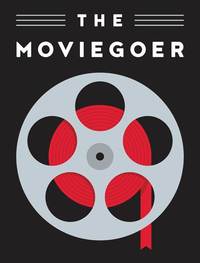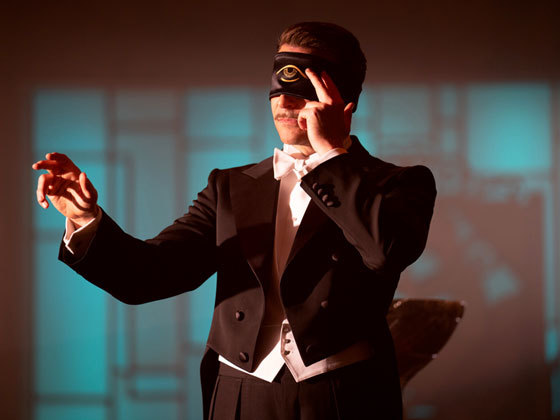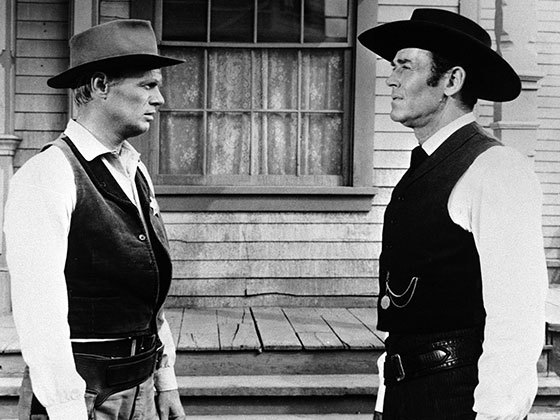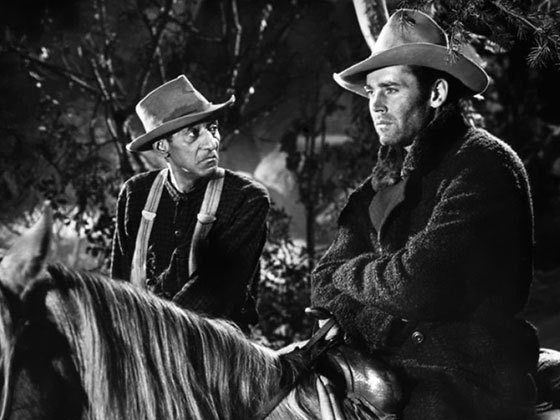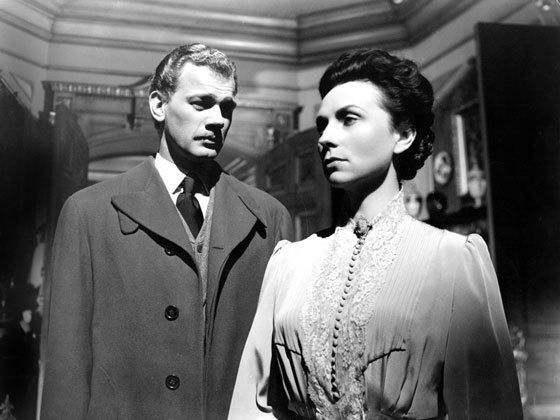By Tom Carson
Overlooked on its original release, this 1972 lensing of Kurt Vonnegut’s cult World War II novel copes honorably and admirably with the book’s tricky time-shifts and inimitable authorial persona.
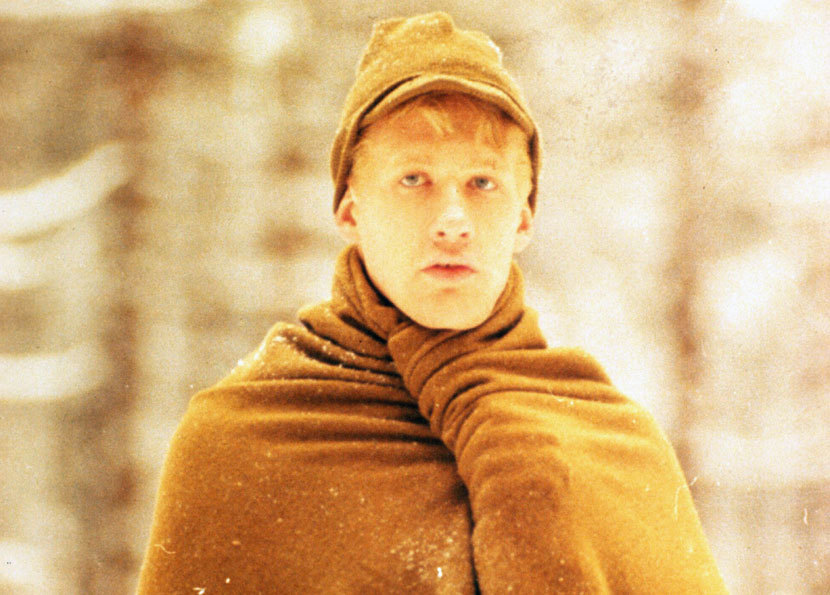
American novelists used to be notorious for grousing about how Hollywood loused up their books. Because they’d grown up at their local Rialto, they took movieland’s bungling depredations personally. But Kurt Vonnegut made an exception for George Roy Hill’s 1972 screen version of Slaughterhouse-Five. Calling the result “flawless,” he effusively added, “I drool and cackle every time I watch that film, because it is so harmonious with what I felt when I wrote the book.” Upping the ante, he said the only other writer who should feel comparably grateful was Margaret Mitchell, author of Gone with the Wind.
Well, that’s how it goes with hyperbole. At the very least, Hill’s Slaughterhouse-Five is sturdy, intelligent, interestingly cast, and often very affecting. It looks just swell, and it’s generally the opposite of a travesty. Yet to fans of the book, the movie is a long way from being talismanic, certainly not at the level—sorry, Kurt—that David O. Selznick’s Gone with the Wind fused with Margaret Mitchell’s GWTW into a single pop artifact in the public’s memory. Hill’s adaptation wasn’t a hit in 1972, despite mostly positive reviews. The counterculture audience that had taken Vonnegut’s deliberately frail and fragmentary tale of Billy Pilgrim, bewildered POW and survivor of his own side’s 1945 firebombing of Dresden, to its bosom three years earlier had already curdled, grown fatigued, or just moved on.
| READ THE NOVEL |
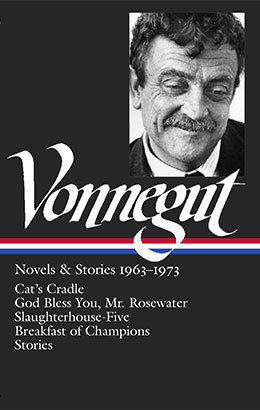 |
| in Kurt Vonnegut: Novels & Stories 1963–1973 |
The Zeitgeist giveth, and the Zeitgeist taketh away. The enormous success of Vonnegut’s book in 1969 hadn’t been what you’d call unpredictable. He’d been a hit on campuses and gaining traction with critics since 1963’s Cat’s Cradle, and everyone understood that Slaughterhouse-Five was his “big one”: the reckoning with his status as a bewildered eyewitness to Dresden’s destruction when he was a twenty-two-year-old POW himself, resifted for twenty years before he hit on the right form to crystallize its significance. In the published novel, the main event—a whole city’s overnight vaporization, along with the corpse-hunting, moonscape aftermath—rates a few terse, emotionally numb pages. The rest is gallimaufry, vagrant compassion, sci-fi tomfoolery, and calm jokes about death’s ubiquity. All this was catnip to a generation unsure whether life had meaning but made no sense, or made sense but had no meaning.
Besides the famous, compulsive refrain of “So it goes” whenever anybody kicks the bucket, the best-known sentence of Slaughterhouse-Five is the one introducing Vonnegut’s central conceit: “Billy Pilgrim has come unstuck in time.” Seemingly at random, he bops back and forth between being taken prisoner by the Germans during the Battle of the Bulge, eventually getting shipped to Dresden just before it’s turned into cinders by Allied bombers, and being a middle aged well-off optometrist, husband, and father in the ridiculously affluent postwar U.S.A.
Badminton games with chronology weren’t exactly unprecedented in the era’s hip fiction. Julio Cortazar’s labyrinthine Hopscotch, for instance, predated Slaughterhouse-Five by half a dozen years. But Vonnegut’s great stroke of empathy was to turn the scrambling of linear time into his protagonist’s conscious understanding of how life works, not just authorial high-hatting. Billy discovers that Earthling calendars are poppycock once he’s abducted to the planet Tralfamadore, whose denizens explain to him that past, present, and future all coexist simultaneously. His zoo-creature life on Tralfamadore, where he’s mated with porn star Montana Wildhack for their keepers’ edification, is the third of the novel’s unpredictably recurring main settings.
In other words, screenwriter Stephen Geller—a novelist with only one prior script credit (for The Valachi Papers) to his name—had his work cut out for him. To appreciate what a superb job he did, remember that Slaughterhouse-Five was intended as mainstream entertainment from a studio (Universal) not renowned for financing esoterica. Alain Resnais had familiarized art-house audiences with puzzle-box chronology in Hiroshima Mon Amour and Last Year at Marienbad. Richard Lester had semi-commercialized Resnais’s techniques—glibly, but effectively—in 1968’s Petulia. But Geller and Hill didn’t have the luxury of tantalizing moviegoers with unresolved enigmas, which anyway wasn’t Vonnegut’s M.O. They had to keep the novel’s multiplane structure accessible and appealing to people who wouldn’t necessarily know Marienbad from Bedford Falls.
That’s why one of Slaughterhouse-Five’s major virtues is that it’s never confusing, as it so easily could have been. If the Tralfamadore sequences play more like an R-rated episode of TV’s Bewitched than anything in Resnais, that’s all to the movie’s credit—and hardly at odds with Vonnegut’s tone. Incidentally, we can also count our blessings that the movie was made decades before CGI. The minimal special effects involved in staging Billy’s interstellar abduction make it clear that this is a narrative device, not an occasion for pointless whooshery.
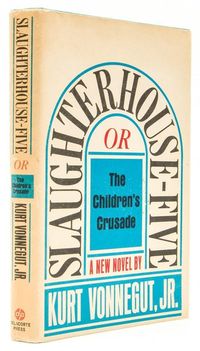
The novel is also laconic and sparse in ways that amount to the bare bones of a movie at best. Over and over, Geller had to concoct whole scenes—dialogue, behavior, whatnot—from no more than a flat statement that this or that incident occurred. He creates a marvelous illusion of being faithful to the novel even when he isn’t just amplifying Vonnegut, but inventing fake Vonnegut from whole cloth. One of his best touches—or maybe Hill’s, since you never know—is the movie’s interest in a Dresden boy turned proudly uniformed POW guard who’s thrilled with his new license to boss powerless adults around, but in an utterly human way that makes his reversion to childhood once he sees his devastated hometown uncannily poignant. (It’s a lovely little performance, too, by the youthful Ekkehardt Belle: almost wordless, but indelible.)
At the same time, other elements of the novel are minimized or simply dropped. Especially regrettable is the diminished role of Roland Weary (Kevin Conway), whose memorably wretched private fantasy that he and two other random GIs are a team of heroes known as “The Three Musketeers” probably couldn’t be externalized on film. A scene of Billy’s dying regimental commander greeting his captured soldiers at a rail yard with a heartening cry of “It’s me, boys! It’s Wild Bob!” loses much of its point minus the benefit of one of the novel’s saddest lines: “That is what he had always wanted his troops to call him: ‘Wild Bob.’”
The biggest—and probably unavoidable—omission is Vonnegut himself. The book’s casually beautiful framing chapter, in which the author chattily explains his work’s real-life origins and creative troubles before he gets around to unveiling “Billy Pilgrim has come unstuck in time,” is vital to understanding why the counterculture trusted him. More than once, he concludes a vignette featuring some anonymous GI by declaring, “That was I. That was me. That was the author of this book.”
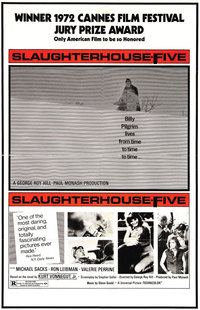
Yet the movie manages to convey the effect of firsthand testimony without hauling out a Vonnegut stand-in to explain that it is. That’s mainly because Billy (Michael Sacks) stumbles through the Dresden catastrophe as the same sort of dazed onlooker Vonnegut was at the time, rarely taking any action on his own initiative and lacking any particular comprehension of what’s going on. Once the Tralfamadorians educate him in the inevitability of all events—including future ones, since they’ve already occurred in his Möbius-strip life—he grows placid about his own ineffectuality. One of the few times Geller violates Vonnegut’s premise for dramatic effect is when the postwar Billy boards an airplane and tries to warn his fellow passengers it’s going to crash. In the book, knowing the outcome can’t be altered by anything he does, he simply accepts their imminent doom and his own unlikely survival.
The movie also errs in turning the crazed drive to the hospital by Billy’s wife Valencia (Sharon Gans) after the plane crash into a comic demolition derby. But otherwise, Hill handles her character with admirable delicacy. Plump, innocently materialistic, and hopelessly shallow, Valencia could very easily have been turned into a grotesque, which would have been par for the course in those sexist times. But Gans plays her for pathos instead, and Hill never treats Valencia like it’s her fault she’s a ninny; the very Vonnegutian point is that she’s a sweet and vulnerable one. No prize himself, Billy could have had a worse wife.
Just twenty-four at the time, Sacks—who never played another leading role before his career fizzled out—makes a highly credible and touching Billy Pilgrim. Peculiarly, he’s especially effective once the character is twice his real age—tranquil, mild, but nonetheless a man of some standing in his community and an occasionally firm father to his troubled son Robert (future Riptide star Perry King) and daughter Barbara (future pioneering out-lesbian folkie Holly Near). Sacks is also good—gentlemanly, but with a furtive streak of lewdness—in his Tralfamadore scenes opposite Valerie Perrine as Montana Wildhack. Perrine, whose only other first-rate role before she wound up playing Lex Luther’s moll in Superman and Superman II was as Lenny Bruce’s stripper wife in Bob Fosse’s Lenny, is a wonderful mashup of the seductively maternal and the innocently carnal—and just so you’ll know, this actress’s apparently cheerful readiness to get naked on-camera made adolescent males in the 1970s every bit as happy as it does Billy himself when he sees his future mate in a piece of amusingly rendered softcore trash at a drive-in. If they hadn’t identified with him before, they did then.
Nonetheless, it probably goes without saying that Sacks is much better-looking and more graceful than the novel’s Billy, never even approximating the “filthy flamingo” of the book’s war episodes. Overall, the movie also considerably softens Vonnegut’s unsentimental view of the American army that fought World War II as a pack of squabbling, demoralized sad sacks. We get the scene of British POWs greeting Billy and his fellows with a rousing chorus of “Hail, Hail! The Gang’s All Here!” and an unexpected feast—but not its aftermath—when the dapper Brits recoil in disgust from this “weak, smelly, self-pitying” crew and won’t have anything more to do with them.
The exception to the softening is psychotic, skeevy Paul Lazarro (Ron Leibman), an American POW who exults in his own viciousness and keeps threatening to have Billy killed after the war. He’s more prominent in the film than in the novel, and Leibman gives the movie’s showiest performance—jarringly so when he’s first introduced. But he gets a convincingly nervy, addled rhythm going later on, especially in the scene where American-born Nazi sympathizer Howard W. Campbell Jr. (Richard Schaal)—imported by Vonnegut from his own 1961 novel Mother Night—turns up to try recruiting the POWs to fight for the Germans against the Russians. Here and elsewhere, Leibman’s yob routines are nicely counterpointed by once ubiquitous, now forgotten TV character actor Eugene Roche’s fine work as Edgar Derby, the thoughtful schoolteacher turned GI who ends up as the final victim in Dresden’s rubble.
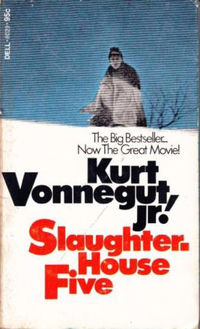
Hill’s staging occasionally gets distracted by the temptation to make Slaughterhouse-Five look like a big, conventionally prestigious World War II movie. Even so, this is the most impressive film of his career, which otherwise ranged from directing one winsome minor classic (The World of Henry Orient) to boisterous star vehicles for Paul Newman and/or Robert Redford (Butch Cassidy and the Sundance Kid, The Sting, et al.). Simply by visualizing them, the movie is more vivid than the novel in evoking the discordances between Billy’s Dresden memories and his placid later life in suburbia. The effect is enhanced by cinematographer Miroslav Ondrícek’s layer-cake palette: all charcoal grays and browns for 1944–45, buttery pastels for Billy’s postwar world, and garish blue dominating the Tralfamadore scenes. The various ways they’re juxtaposed, from flash cuts to neatly dovetailing extended scenes, turn the movie into one long montage. Since not much else in Hill’s filmography resembles Slaughterhouse-Five in technique, a lot of the credit for the fluidity and wit of the time transitions presumably goes to legendary editor Dede (Bonnie and Clyde) Allen—my pick, along with Geller, for the movie’s MVP.
Not far behind them is production designer Henry Bumstead, whose credits dated back to Hitchcock’s Vertigo and who went on to be Clint Eastwood’s favorite ace in the hole. (He turns up here in a bit part as Eliot Rosewater, another member of Vonnegut’s stock company.) It’s typical of Bumstead’s attention to detail that the grown-up Billy’s bookshelves contain not one but two pristine encyclopedia sets: a sign of passivity when salesmen call, not curiosity. But his big test is, of course, Dresden—played by Prague before the bombs fall, and a convincingly desolate field of ruins once Billy and his fellow POWs emerge into what’s left of it after the raid. The unsparing shots of heaped civilian corpses, from schoolgirls to dotards, being doused with gasoline and put to the torch have to be the grimmest Hill ever directed.
As good as it is, Slaughterhouse-Five was always fated to be overshadowed by the original novel, making an honorable companion piece the best Hill and Geller could hope for. But they did achieve that and occasionally more. The movie’s virtues—not only its craft, but its dedication—stand out much more boldly today. Above all, the filmmakers understood that Vonnegut hardly meant to turn his generation’s experience of war and peace into a sci-fi fantasy. He was only saying that it might as well have been.
Slaughterhouse-Five. 1972. Directed by George Roy Hill. Screenplay by Stephen Geller, from the novel by Kurt Vonnegut. With Michael Sacks, Valerie Perrine, Ron Leibman, Eugene Roche, Sharon Gans, Holly Near, Perry King, and Kevin Conway.
Buy the DVD • Watch on Amazon Video • Watch on iTunes • Watch on Vudu
Tom Carson currently writes on politics and pop culture at Playboy.com. A two-time National Magazine Award winner for criticism during his stint as Esquire magazine’s “Screen” columnist, he is the author of Gilligan’s Wake (2003) and Daisy Buchanan’s Daughter (2011), both novels.
The Moviegoer showcases leading writers revisiting memorable films to watch or watch again, all inspired by classic works of American literature.
